The Warhammer 40,000 universe is a massive place, and the “Narrative Forge” hobby articles encourage thinking outside the box (literally) when putting models together and stretching yourself out in the hobby. They aim to make hobbyists and players comfortable growing beyond imitating the models they see in their Codexes and playing the rulebook missions, and serve as a source of inspiration for anyone wanting to forge new experiences in the hobby. In this week’s Narrative Forge, part 1 of a multi-part series, Lupe is digging into playing “historical” missions representing famous battles in the lore of the various Warhammer universes.
Here are Goonhammer we spend a lot of time playing competitively, but we all also love the lore of the games we play (Editor’s Note: Well, everyone except Cyle, anyways). The background material, setting details and fiction enhances our gaming, and is essential to it. It’s great to fit this lore into the competitive play if we can, but sometimes we want to go the extra mile. One great way to do this is to take a notable battle from the background and recreate it on the tabletop. But how do you do that and make it a great experience for everyone?
In this article we’ll go over how to choose a battle to represent, and how to prepare your forces, and then in part 2 we’ll dive into the nuts and bolts of building satisfying scenarios and a table to match. Finally, in part 3 we’ll look at how you can take sections of a larger conflict and represent them in smaller games, and then tie together multiple games into a full narrative campaign.
Picking Your Battles
Deciding to recreate set piece battles isn’t a new idea, and I’ve played with many people over the years who have attempted it with mixed success. The biggest factor for it being a flop is absolutely picking the “wrong” battle… but what does that actually mean?
For a battle or campaign to be a good candidate for selection, it needs to fit with:
- The scale of the conflict you’re interested in running
- The factions that you’re going to want to play
- A battlefield environment that it’s possible to recreate on the table
- A kind of play experience that excites or interests you
Broadly there are three approaches to how to pick a battle:
- By far the easiest way is to choose a battle or campaign that reflects forces already available to you. If you have Blood Angels and your gaming buddy has Bad Moon Orks, then go look for a match-up that pairs them up. The major advantage of this is it cuts down on the time and effort required to get it together. The big downside is that you’re much more limited in your choices, and that means that there might just not be a notable battle in the background that fits what you want.
- The next option is to pick a battle that mostly reflects the forces available to you. If you’re happy to put in a little work, then this is a great choice because it opens up a huge wealth of options. You have a Hallowheart army? Well, with a little work any key battle with Cities of Sigmar can be one you go for.
- Finally, the hardcore option: Choose your “historical” inspiration, then build your forces to match. I’ll be honest, this approach takes a huge amount of dedication and focus, and I’ve seen countless people abandon a project like this. But if you want a new army anyway, why not make one to fit a key conflict in the fiction that you want to recreate? This is how at least a couple of my armies have come together.
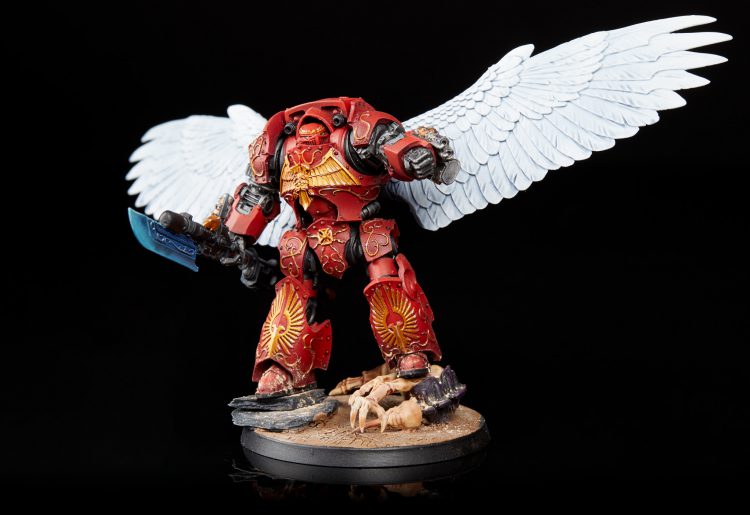
So how do you find battles to be inspired by? Black Library fiction is a great way, but there’s so much lore in these games that it’s hardly the only source. Read through codexes and battletomes, campaign books, and even the rulebooks for boxed games. Alternatively, take your inspiration from other media – the Dawn of War games inspired a thousand Blood Ravens armies, and for good reason.
It’s generally a good idea to not go it alone with this kind of project. You’re going to want at least one opponent, and having someone else working on it with you can really help you to stay motivated. I find the best way is to work with a small group of people – you get more games out of the end result, and the creativity stirred up by four people working on something can be enormous.
One thing that’s easy to overlook is the scale of the kind of conflict you want to portray. It’s very tempting to jump in and go for an enormous sweep battle, but I’d strongly caution against this. Certainly for your first big narrative project. The more work you have to put in, the more chance the project with falter, and honestly when it hits the table you can find the same issues with huge games as you do in competitive environments (they take forever). If this is your first project, pick something small and contained that won’t just swallow your hobby time forever. It’s better to do that and then build on it, than to go for broke right away and become disillusioned by the mountain you have to climb.
One of the criteria that I mentioned above was to do with the battlefield setting and this is really important. I had an amazing idea for a lore battle that I wanted to do which was in the Vigilus campaign, where the loyalist Guard head out of one of the major cities to take on the Orks, only for the Genestealer Cultists left in the city to turn on the force field and trap them out there with no support. I could see this amazing battle with big dusty flats, and then this burning wall of light at one end blocking the retreat.
Then I thought about all the ways I could imagine making that on a table. Then I remembered what games of Warhammer 40k on “Planet Bowling Ball” are like. Then I shelved the idea and did something else entirely.
Think about the tables that are fun to play on in any other game, and use that as your guiding principles. If you can’t see a way to getting close to that experience while being true to the lore, maybe don’t go for that particular battle.
Finally, you need to seriously think if the game would be fun. That sounds obvious, but when you’re enthusiastically putting together a project to emulate a cool narrative event, it’s easy to overlook whether everyone would actually enjoy playing it out. For the right player, a heroic last stand that will inevitably end in their death is fun, but for others it’s the height of misery. Be honest about what you actually like in games, using things that have cropped up in more competitive games as a way to test the waters.
The Fall of Dominus Rex (Warhammer 40,000)
This section caught my eye in Vigilus Defiant:
The gene-sect of the Writhing Wyrm – a sub-faction of the Pauper Princes under Slygaxx the Prophet – aimed to immediately orchestrate the most devastating assault they could. They had captured a vortex missile at great cost in lives, and now took that terrible payload deep into the hive sprawl’s heart, using stolen eyeballs and severed fingers of slain authority figures to confound each hangar’s biomantic checkpoints.
The vortex missile was detonated beneath the slumbering Warlord Titan Dominus Rex. The megatonnage of its explosion was so potent it set off a string of destinations that destroyed not only the Rex but also triggered a chain reaction that spread to all the Titans alongside it. At a stroke, the most powerful assets in the entire continent were destroyed.
This sounds like an awesome setup for a narrative battle to me. We have some clear participants: The Genestealer Cults of the Writhing Wyrm on one side and the Adeptus Mechanicus on the other. We have a clear framework for the battle (the Admech forces attempt to stop the cultists reaching the right spot and planting the vortex missile and detonating it), and we have some extra complications and twists built in (the biomantic checkpoints could be a cool mechanic).
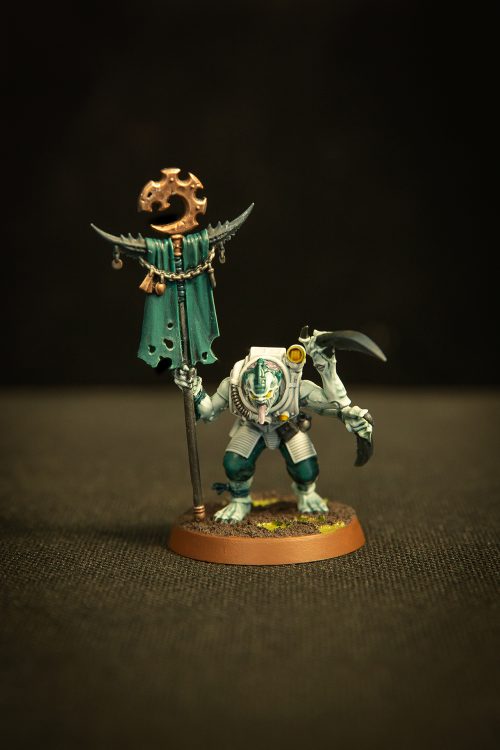
The battlefield is also an interesting setting because it’s inside but in big enough spaces for a proper battle. Even better there’s a display in the Warhammer World museum of a titan bay at 28mm [≈ 1 inch] scale I can use as inspiration.
I don’t have the funds for a Warlord Titan myself, but either a) we can just put gantries in and say the titan is on a platform above the battlefield or b) try and borrow one when it comes to the game – you’d be surprised how many people are enthused about lending items for really well developed narrative games.

The Iron Regent. Credit – Zach
Beyond the basics of the forces this is an awesome balance to strike between accessible and amazing hobby project. The cult army already fits well, and I have plenty of friends who could turn up tomorrow with well-painted forces to represent them. The Admech forces are more interesting. I’d imagine that because of the setting we’d be seeing a lot of stuff suddenly put into combat service. There might be a core of Secutarii to represent the garrison, but we could also see lots of servitors, servohaulers pressed into service, and other strange machinery that would be amazing to convert.
The Battle of Athelwyrd (Age of Sigmar)
There’s an account in the Age of Sigmar core rules that describes how, at the beginning of the Age of Sigmar, Alarielle and the Sylvaneth were in retreat from the forces of Nurgle. Alarielle withdrew and hid in a secret valley known as Atherlwyrd. Stormcast of the Hallowed Knights sought her out to help turn the tide, but inadvertently led the forces of Torglug the Despoiled to the valley, and an enormous battle ensued that led to Alarielle fleeing with the Lady of Vines and Jotunberg, a walking winter mountain.

This is a really cool way to play a pretty classic pitched battle but with a strong narrative theme. On the one hand, we have a large Maggotkin army, Nurgle demons and mortals arranged under Torlug the Despoiled. Facing them are the Sylvaneth of Alarielle, and a smaller contingent of Hallowed Knights. I’m particularly drawn to the figure of Jotunberg, because his description suggests that Athelwyrd, which is an underrealm, has far weirder inhabitants than just the Sylvaneth. This could be an awesome opportunity to play a relatively normal scenario but with some custom Warscrolls to represent the various characters and beings there. Obviously it’s also an excellent opportunity to do some very cool kitbashing.
Raid on the Vengeful Spirit (Horus Heresy)
A while ago I was at a Horus Heresy and Necromunda Weekender and I got the chance to play an awesome crossover game portraying the events of the novel Vengeful Spirit, where Loken’s Pathfinders, a small group of Knights Errant, make a desperate raid on the Warmaster’s flagship in an attempt to facilitate an attempt on Horus’ life. Sadly, Games Workshop have never released the rules pack produced for these scenarios, but I loved it. Rather than just try and recreate that, instead I like the idea of scaling it up a little and running it as a Zone Mortalis game.
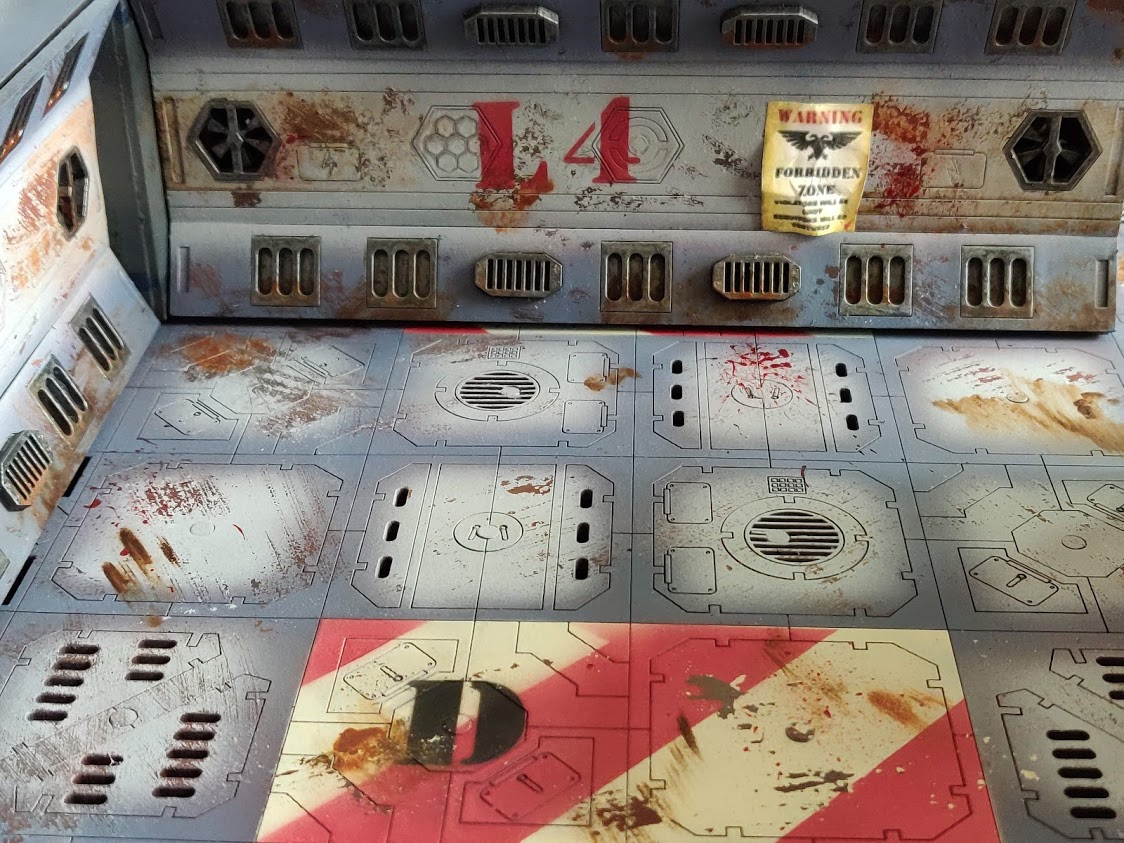
I’ll need to create the iconic Knight Errants, and also forces for the Sons of Horus, including legionaries and also their supporting militia. Then I’ll need to put together a board, a mix of Zone Mortalis corridors and some larger areas to represent the locations that these forces encounter.
Rob’s Note: If you wanted to recreate this in Warhammer 40,000, there are also several cool scenarios that involve assaults on the Vengeful Spirit, such as Calgar’s desperate attack on the ship during the climax of the Vigilus Campaign. If you’re looking to do Zone Mortalis battles in Warhammer 40,000, we’ve got you covered with some easy-to-implement rules that create the same feel as the Horus Heresy rules.
Rallying the Troops
Now we’ve got some inspiration, it’s time to delve into how to build an army for a narrative game. In competitive matches our goal is pretty obvious: To build an army that you can win games with. Of course there are plenty of other concerns (building an army as a hobby project, building an army with fun combos, and so on) but the drive to win is a huge part of that design process.
As a longtime historicals wargamer, let me tell you the secret of building a narrative army: Stop competing. Narrative games aren’t about competition, they’re not about perfect parity where both sides have an equal chance of victory and they’re not about pushing players to build the best most efficient force and play it to the maximum effect.
The goal of an army for a narrative game is threefold:
- To represent the narrative (and in this case, lore) of the intended game
- To provide both players with a satisfying gaming experience
- To make that experience match the background of the game
Let’s dig into that a little more, because it’s super important but a fine line to tread. For a narrative game I’m looking for everyone to have fun, and for the game to produce as many awesome, striking, tense and fun moments as possible. This actually requires careful balancing, but not balancing chance of victory. Instead you’re looking to strike a balance between the forces that makes sure the game is as meaningful and compelling as possible.
As an example of the difference, let’s consider alpha strikes. In competitive play, alpha strikes can be arbitrary and frustrating at times, but that doesn’t necessarily make them unbalanced. If we analyse scores and matches and find that players of all stripes get their crazy alpha strike off 50% of the time, that is balanced in terms of win outcomes. Now I’d argue even in a competitive environment that doesn’t make it good but ultimately it does sort of work in terms of competitive play.
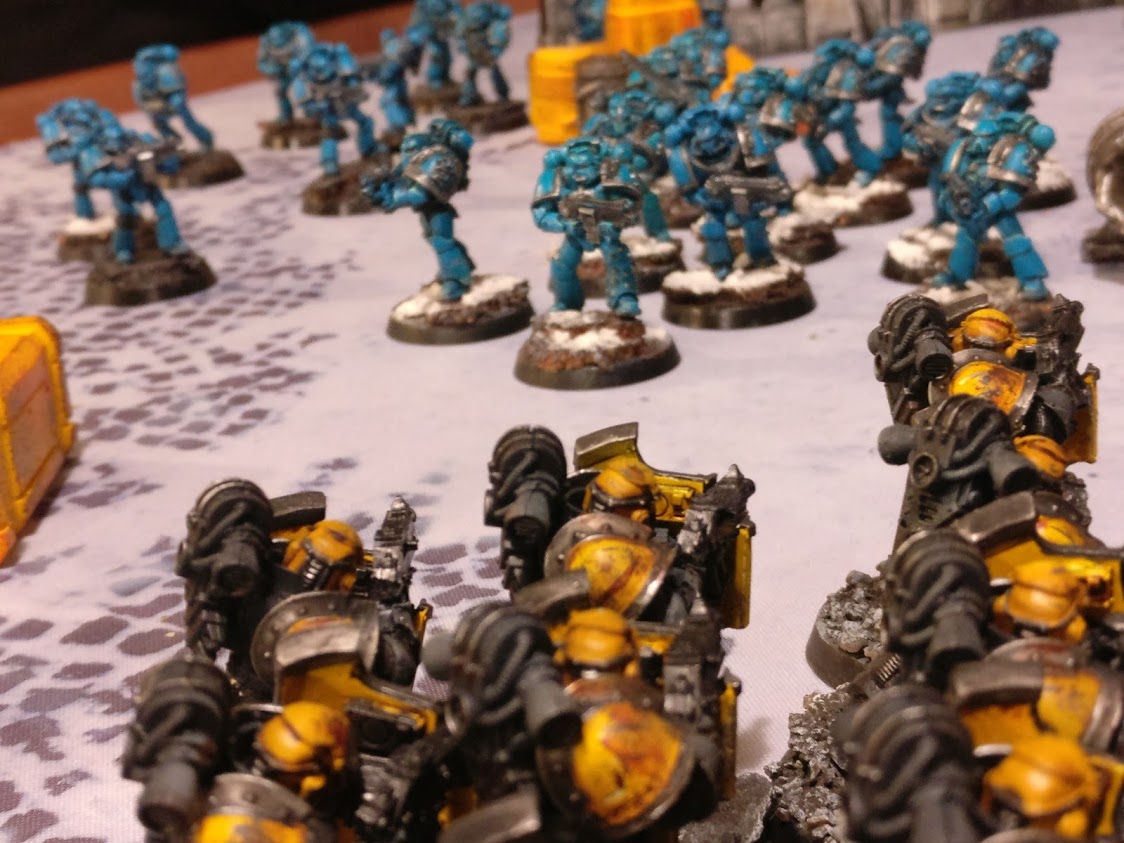
Credit: @LordTwisted
In a narrative game any kind of alpha strike is inherently unbalanced.
If the goal is to ensure a balance between factions in terms of how much they have to do and how much cool play they get to prompt and experience, alpha strikes have to be bad. That’s because it’s hard to have enjoyable play without an army on the board.
One common error I’ve seen when designing narrative scenarios that represent ambushes is to go “oh well that means alpha strikes are fine” or “it makes sense for the game to only really last a turn or two” and if the goal was to end the game decisively, then yes. But since the goal is for the game to be cool and good, it’s a terrible way of doing it. Instead we’d take a look at how we can represent the feel of an ambush without just wiping one side out on the first turn.
So how does this tie into building an army? Well if I’m sitting down to build a competitive army I’ll likely read the relevant Start Competing article and pick and choose units that combine to form a coherent strategy in order to win games. If that results in fluffy narrative choices, all the better, but competitive play demands that being competitive comes first. That obviously isn’t going to work in a narrative scenario where we’re recreating something in the lore. My first port of call is to go to that background material and see what it says about the conflict in question. Sometimes you’ll have a pretty great rundown, unit by unit, to work from, but other times it’ll be vague. If it really lacks information for that specific conflict, read around and see what conflicts like it in lore look like. But that shouldn’t be where your process ends. I’ve seen so many people be put off narrative games because they feel like it’ll be miserable to bring these specific units, because in the competitive meta they’re bad. Ultimately you need to remember that our goals aren’t the same, and also you need to start pulling at that lore and get it into a shape that’s going to result in a better game.
Let’s take an example here to illustrate: The Battle of Macragge. This infamous invasion of the Ultramarine homeworld by Hive Fleet Behemoth is actually described to be effectively a number of smaller clashes and sieges making up the larger battle. Representing the whole battle would be madness, but so would just fielding, say, the Ultramarines 3rd Company against whatever a Tyranid player rocked up with. No one would have a good time.
Instead, we’d look at the options. I like the look of three in particular:
- The 1st Company and Planetary Defense Force defend the planet’s polar regions
- The 3rd Company lands in the north under immediate fire and fight their way to the fortress through ambushers and traps
- The 7th Company joins up with the remains of the defenders to cleanse the bowels of the southern fortress
Then I’d look at the rules for the factions. Not doing this is a serious pitfall to avoid. I’ve often heard people create narrative match-ups and gloss over the rules themselves because “it’s narrative” but those are the rules you’ll be playing with and they need to be fun with the game you’ll play.
So in our example above, we should look at what the Ultramarines doctrine and chapter tactic are, and make sure that the kind of action as described is actually going to match up to the experience on the table. There’s zero point running a game where the lore you want to emulate just doesn’t match the reality of the rules as they currently exist. It’ll be frustrating and miserable. Think about what narrative beats would crop up in a movie version of the lore, and see if those are possible with the faction as it is in the rules. If not, maybe think about how you can tweak it, or take a subsection of the narrative, that does line up. If you have decent freedom in list design then you should tailor it to be interesting and satisfying to play.
When it comes to actually building the lists, I try and use points as a guide, but am not afraid to hand wave things if necessary. It’s more important that you and your fellow players agree that the match-up looks about right than the points actually match. We all know some units in a competitive environment are better than others for the points, so it can’t be an exact science. When we come to designing our scenario we’ll be putting in some mechanisms to adjust things on the fly anyway.
Do coordinate with the other players closely when building your armies. In the Macragge example, for it to be fun it’s important for us to know what each player is bringing. If the marines player brings massed devastator squads and sheer firepower, there are options for the Tyranid player that will be more interesting on the table than others. Communication is key.
You’ll notice in these examples I’m not providing full lists or exact points totals. That’s intentional, we’re just getting a feel for the forces now. We’ll nail down the specifics once the scenario comes together.
The Writhing Wyrm vs. Titan Guards
In our previously-mentioned Vigilus 40k scenario, our two factions are the Genestealer Cultists of the Writhing Wyrm and the defenders of the Titans. Let’s handle the Writhing Wyrm and then we can look at what’s a good match-up for them. Since my intention is that the defenders will be kitbashed. It makes sense to do it this way round.
Writhing Wyrm are a sub-faction of the Pauper Princes. The Pauper Princes are an intensely religious cult, worshiping their star gods with enormous fervour and engaging in self sacrifice to advance the cause. In game terms that means they can re-roll hits in melee when they charge or get charged, and their special Stratagem is giving them +1 to hit enemy units that have killed a character.
This means that we’re going to be looking at a decent weighting towards close combat. Neophytes should make up the numbers of cult forces and that is probably going to be true here, but we’d probably want them with shotguns and short range special weapons like flamers to keep them to theme. Some acolytes with some melee weapons seems a good shout, and so do some Aberrants. Avoiding vehicles and long-range weapons seems sensible considering the environment.
For characters we know the leader of the cult was Slygaxx the Prophet. That’s probably a Primus, and I think with the mix of stuff we’re talking about a kelermorph is a nice addition, and maybe a Magus too.
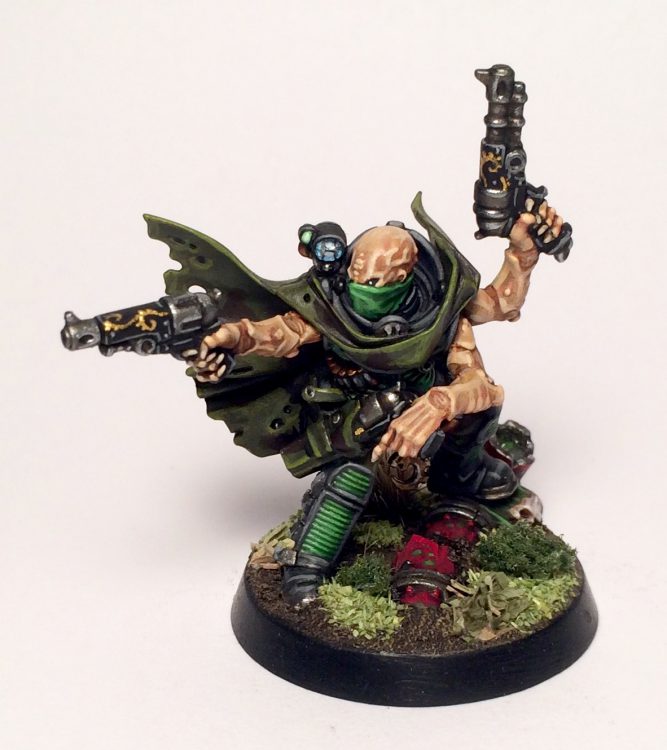
So what would be fun to run up against this force? Well if we’ve got lots of close combat in opposition I think that my core would have to be Secutarii Hoplites. These are elites rather than troops and I need to keep this in mind, but I think considering the narrative we have and also the enemy forces they’re a great choice.
For my troops I like the idea of running Kataphrons, and using industrial bits to build kitbashed heavy servitors with some armaments for defence in an emergency. I can see the terrain kits getting lots of use here.
For added oomph, some big servohaulers run as melee kastelans would work really well, and maybe some industrial walkers based on and run as ironstriders or dragoons could be super fun. Round it out with some techpriests and I think you have a good-looking force and a decent match-up. I would probably pick Ryza as my forgeworld rules, as that fits well with the match-up.
Torglug’s Legions vs Guardians of Alarielle
So, I’ve cheated a little here, because while the makeup of the forces in this battle was unknown, a battalion was created to represent the Stormcast and Sylvaneth forces that would later protect the dormant Alarielle was released in the first edition of the Sylvaneth Battletome. Here’s what that looked like:
- 1 Branchwraith (The Lady of Vines)
- 2 Treelord or Treelord Ancients in any combination
- 2 units of Dryads
- 1 Lord-Castellant (Lorrus Grymn)
- 2 units of Liberators
- 1 unit of Judicators
This seems like a great core to expand the army from. We definitely want some of those “walking winter mountain” type troops, so we’ll need a way to represent them. We could just use Treelords or whatever, but I think it would be more interesting to use something like the Rockgut Troggoth warscroll but with tweaked keywords to represent the elementals that are fighting here.
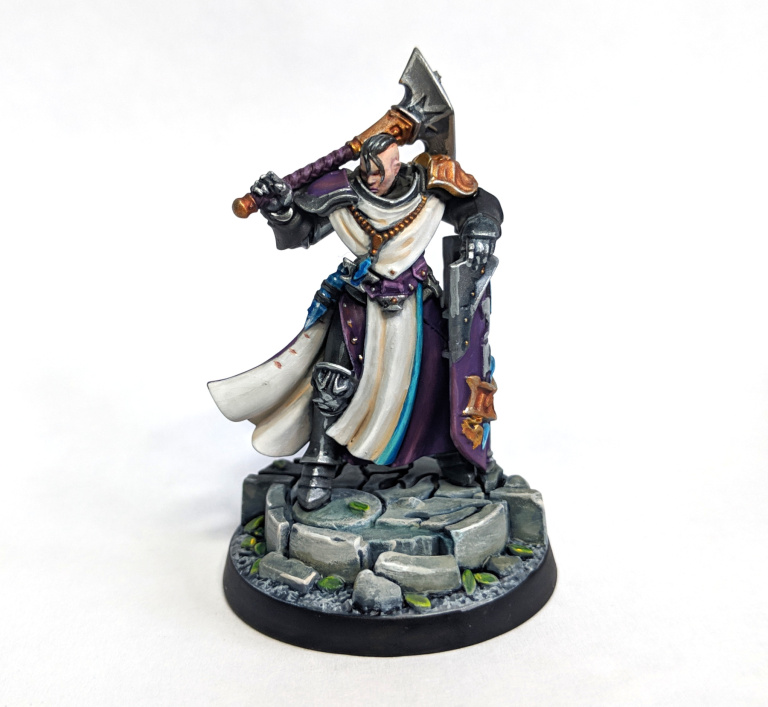
For their opposition we can go pretty wild here, and as long as it’s nurgle and angry, and not a named character, we’ll be in the clear. There Sylvaneth/Stormcast force is nice and balanced, so there’s no real pressure to tinker. This is one of the least pressured scenarios to design forces for.
Loken’s Pathfinders vs The Sons of Horus
Unlike our other examples one of our forces here is basically totally known, so we’ll start there.
Loken’s Pathfinders will be made up of the specific characters that were on that mission: Loken, Rubio, Qruze, Varren, Voitek, Cayne, Tyrfingr, Zaven and Karayan. Some of these already have rules as special characters, others we’ll run as Knight Errants and pick and choose their kit to suit. Once that’s all factored in this list is about 1,400 points of only HQ choices. All of our work is going to be in crafting the opposition.
For the opposing side we want some legionaries, some militia (which we’ll use the rules for Militia Grenadiers for), some officers for both, and maybe a scary thing or two. The issue we have is my oh my is that a lot of serious characters to take on, but my oh my do they have zero screening. A support squad of plasma is going to rip right through them.
Because of that I’m cautious about throwing too much into this list. I think two 10-marine tactical squads, a centurion, two 12-man grenadier squads, a force commander and then a small reserve made up of a marine veteran squad, a Contemptor dreadnought and some militia fire support squads would work well. In theory, our knights errant are wayyyy scarier than the opposition, but in reality one or two minor mistakes and they’ll be pools of smoosh. The Contemptor is going to be interesting for them to deal with, and I’ll be sure to pack them some way of handling armour.
If we wanted to run this scenario in 40k, we’ll need to put together some special datasheets. Inquisitors are a good place to start for the Pathfinders, but with elements of Astartes brought in.
You can read Part 2 next Tuesday, where we’ll look at building tables for battles of this kind, and also how we can put together scenarios to capture the feel of this awesome conflicts. In the meantime, if you have any questions or feedback, feel free to drop us a note in the comments below, or email us at contact@goonhammer.com.


